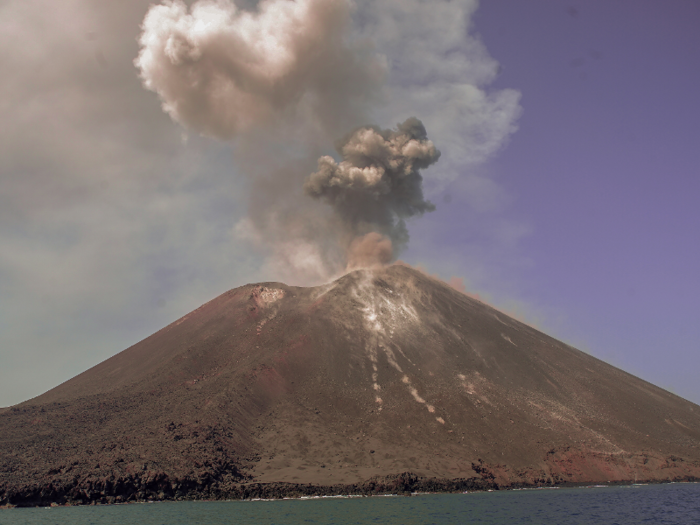
In 1883, the Krakatau (Krakatoa) volcano erupted in a series of four explosions that destroyed the surrounding island and killed more than 30,000 people. The eruption wreaked havoc on global weather patterns for the next five years.
Some 50 years later, the island of Anak Krakatau (Anak Krakatoa) emerged from the site of Krakatoa's fiery death.
Anak Krakatau — located east of Jakarta, Indonesia — has been active since 1927 and erupted nearly every year, according to a volcanologist-run website called Volcano Discovery, which catalogs information about volcanoes.

Anak Krakatau had been growing taller by an average of about 5 meters (16 feet) per year, according to EarthSky.

This image is more zoomed out than the previous one, so it also includes the islands that surround the volcano. But it's clear that, at the top of Anak Krakatau, there's now a gaping hole. The trees and wildlife that once lived there are also gone.

It shrank from a height of 1,108 feet to 361 feet. The volcano lost two-thirds (some 100 million cubic meters) of its volume.

Anak Krakatau is still active; the collapse didn't stop its volcanic activity.

A period of high-intensity volcanic activity followed the collapse during the final weeks of December, which means the island is already rebuilding itself, according to Michigan Tech volcanologist Simon Carn.

The December 22 tsunami came without warning.
Richard Teeuw of the University of Portsmouth told The Guardian that “the likelihood of further tsunamis in the Sunda Strait will remain high while Anak Krakatau volcano is going through its current active phase, because that might trigger further submarine landslides.”
 Stock markets stage strong rebound after 4 days of slump; Sensex rallies 599 pts
Stock markets stage strong rebound after 4 days of slump; Sensex rallies 599 pts
 Sustainable Transportation Alternatives
Sustainable Transportation Alternatives
 10 Foods you should avoid eating when in stress
10 Foods you should avoid eating when in stress

Copyright © 2024. Times Internet Limited. All rights reserved.For reprint rights. Times Syndication Service.